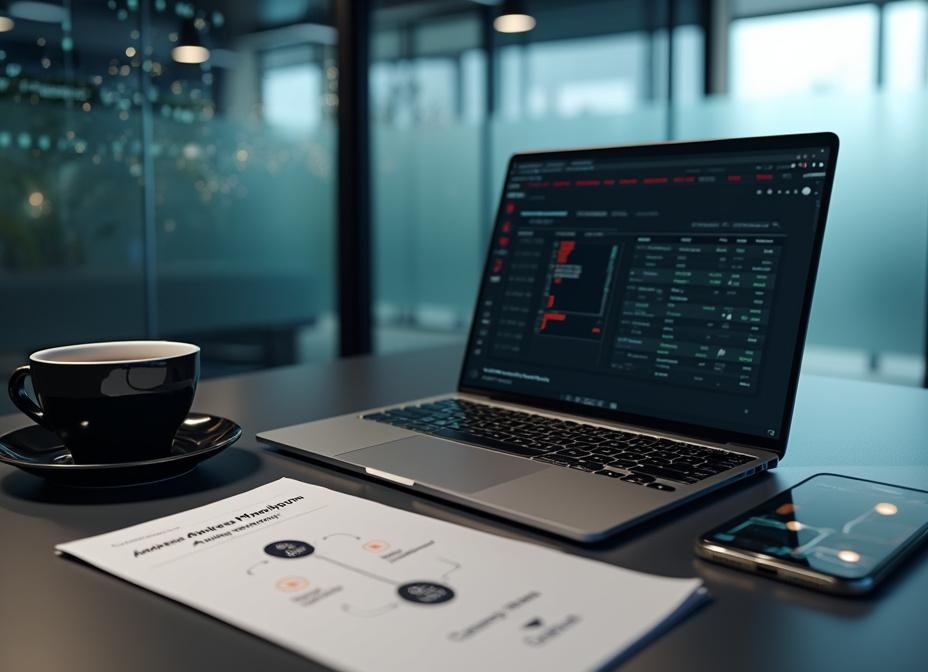“M&A 2025 Predictions: My Outlook for Upcoming Market Trends”
Introduction
We’re on the cusp of a new era in mergers and acquisitions. Having spent years guiding businesses through expansions, divestitures, and strategic partnerships at Achieve Corporation, I sense that 2025 will bring a wave of changes unlike what we’ve seen in the past decade. From digital transformation to shifts in global policy, the landscape is evolving rapidly.
In this article, I want to share my predictions for M&A trends in 2025—why certain sectors might surge, how cross-border deals could be reshaped by geopolitical shifts, and which innovations will likely drive value creation. While no forecast is foolproof, planning for these potential scenarios can empower business owners, directors, and investors to position themselves advantageously. By the end, I hope you’ll feel better prepared to navigate the new terrain, whether you’re seeking to acquire, merge, or exit on favorable terms.
Resurgence of Mid-Market Deals
One pattern I’m anticipating is a notable uptick in mid-market deals. Post-pandemic recovery saw many companies reorganise their capital structures and accelerate digital shifts. As a result, businesses that once aimed for small acquisitions or purely organic growth may now feel emboldened to pursue larger targets, though not necessarily at mega-deal levels.
Why the mid-market segment? For one, private equity firms flush with cash continue to see growth potential in companies with established track records yet ample room for scale. Secondly, family-run and founder-led companies are increasingly open to partial sales or equity partnerships—especially if it means upgrading technology and tapping fresh expertise. An open-ended question: “Could your company benefit from aligning with a mid-market firm now, rather than waiting to become a top-tier acquisition target?” Sometimes, jumping earlier into the M&A game can secure better terms and foster sustainable growth.
The Ascendancy of Digital-First and AI-Driven Companies
Looking ahead to 2025, digital-first or AI-driven organisations stand poised to command premium valuations. From sophisticated data analytics to machine learning solutions, these companies hold the keys to streamlined operations and transformative insights. The race to acquire AI capabilities might spur fierce competition, reminiscent of the 2010s scramble for cloud-based services.
At Achieve Corporation, I’ve already fielded queries from traditional businesses eager to buy or merge with tech-based entities that can future-proof their offerings. If you’re a non-tech founder, consider whether acquiring a smaller AI firm could leapfrog your product development cycle. Conversely, if you lead a cutting-edge tech start-up, the next few years might usher in a flood of inbound interest from larger, historically offline companies craving your intellectual property and creative talent.
Cross-Border Deals: Balancing Geopolitics and Opportunity
Political dynamics will continue to influence cross-border M&A. Brexit’s final ramifications still unfold, and shifting global alliances may alter how easily investors can move capital between regions. I predict we’ll see more regional trade agreements and bilateral treaties that could streamline deals in some areas while complicating them in others.
Yet, for companies that adapt nimbly—securing the right legal counsel and staying alert to regulatory changes—international M&A could blossom. Certain markets in Asia and the Middle East remain eager for Western technology and brand equity, just as Western firms seek the robust manufacturing capabilities or emerging consumer bases of those regions. At Achieve Corporation, we monitor these developments closely because a strategic international partner might yield stronger ROI than a local one, despite the red tape.
One anecdote: a UK-based healthcare firm I advised managed to bypass typical import quotas by partnering with an Indian pharmaceutical distributor. The synergy wasn’t immediate, but once they navigated the legalities, the firm unlocked new revenue streams. By 2025, I expect more businesses to replicate such cross-border success stories, provided they remain agile and well-informed.
ESG-Focused M&A: Driving Sustainability and Social Impact
Environmental, Social, and Governance (ESG) criteria aren’t just buzzwords anymore. Investors worldwide increasingly favour deals that demonstrate responsible practices—be that reducing carbon footprints or fostering inclusive corporate cultures. As regulators step up sustainability reporting requirements, companies that proactively align with ESG values may find themselves in a stronger negotiating position. They become attractive to funds and buyers who see long-term resilience in ethical practices.
I foresee a growing number of deals specifically orchestrated to acquire sustainability know-how or socially conscious brands. If you’ve cultivated an eco-friendly supply chain or a strong social mission, your intangible assets could merit a premium. Conversely, businesses with poor environmental records risk losing value or facing heavier due diligence queries from ESG-focused investors.
Open-ended question: “How might your current ESG posture influence an acquisition or merger in 2025?” If the answer is “not at all,” it may be time to revisit how you’re positioning your brand in an increasingly conscientious market.
Consolidation in Healthcare and Biotech
The healthcare and biotech sectors, already hotbeds of innovation, will likely see further consolidation in 2025. As global populations age and new viruses emerge, companies that develop vaccines, diagnostic tools, or telemedicine platforms will remain prime acquisition targets. Larger pharmaceutical giants might snap up smaller labs to acquire novel R&D pipelines, while hospital chains could merge for cost efficiencies and expanded patient reach.
At Achieve Corporation, I’ve noted rising interest among private equity and venture capital firms in earlier-stage biotech. By 2025, we could witness some of these fledgling ventures—once perceived as risky—reaching commercial viability. Their valuations might surge, fueling a wave of buyouts or strategic alliances. If you’re a mid-sized healthcare services provider, consider forging relationships now with complementary biotech innovators, potentially paving the way for a merger that accelerates your offerings.
The Remote Work and Hybrid Model Factor
Remote and hybrid work models are reshaping corporate cultures and operational structures. By 2025, companies that adapt effectively to these models could be more attractive M&A candidates, demonstrating higher productivity and lower overhead costs. Additionally, they might have the flexibility to integrate acquisitions from diverse geographies more seamlessly, given they’re not reliant on a single central office.
On the flip side, buyers may scrutinise how effectively a target company manages remote teams. If the workforce is scattered globally, cultural and language barriers can complicate post-merger integration. Sellers who emphasise robust remote collaboration tools, clear digital communication protocols, and successful track records of hybrid operations may stand out.
Valuation Shifts: From Pure Revenue Multiples to Holistic Assessments
Given the growing focus on intangibles—like data, AI potential, brand loyalty, and ESG initiatives—I expect valuation methods in 2025 to evolve. Traditional revenue or EBITDA multiples will remain, but acquirers might weigh intangible assets more heavily. If your company has cultivated a unique community or specialised data sets, expect more due diligence around those intangible advantages and how they might be monetised.
I’ve already guided a few deals where intangible assets accounted for nearly half the assessed value. As intangible assessments become more standardised, this trend will only intensify. Another shift could see more “earn-in” structures tied to these intangible metrics—think AI-driven user engagement or brand sentiment—rather than purely on profit or revenue goals.
Cybersecurity as a Due Diligence Priority
Cybersecurity breaches have made headlines repeatedly. By 2025, robust cyber practices may be a non-negotiable factor in M&A. Buyers will want to ensure that any target’s data handling and security measures are up to scratch—lest they inherit a ticking time bomb of vulnerabilities. This might lead to specialized cyber audits as part of the standard due diligence process.
Companies that proactively invest in cybersecurity infrastructure and can demonstrate a clean track record might enjoy a smoother M&A ride. Conversely, those with patchy cyber defences could face price reductions or even see deals fall through. If you haven’t already, consider stepping up your cybersecurity posture now. At Achieve Corporation, we coach clients to view cyber resilience as a value-add, not just an IT expense.
The Human Element: Post-Merger Integration
Even with advanced technology shaping valuations and ESG imperatives redefining priorities, human integration remains pivotal. Deals fail more often because of cultural clashes than flawed spreadsheets. I predict that in 2025, we’ll see an even greater emphasis on thoughtful integration plans, from executive alignment to staff communication.
Open-ended question: “Do you have a robust plan for blending teams, preserving morale, and unifying company cultures after a deal closes?” If not, it’s worth planning well before 2025. Acquirers who nail the people aspect could achieve synergy faster, reaping the full benefits of an acquisition sooner and avoiding talent attrition.
Conclusion
The M&A landscape in 2025 will be characterised by mid-market dynamism, AI-fuelled deals, heightened ESG scrutiny, and more nuanced valuation strategies. For some businesses, cross-border partnerships might unlock untapped markets; for others, pivoting toward digital or sustainable solutions could prime them for acquisition. Cybersecurity and workforce integration will be top considerations, underscoring the complexity that goes into a successful transaction.
At Achieve Corporation, I’m preparing my clients for these shifts by emphasising forward-looking diligence. Are you ready to capitalise on emerging tech solutions or adapt to shifting geopolitical winds? Has your leadership team pinned down an ESG strategy to capture investor interest? Answering these questions now can position you to thrive in the M&A environment of 2025.
If you’re looking to refine your strategy for the coming years—whether through acquisitions, partial sales, or strategic alliances—reach out to me at Achieve Corporation. Together, we’ll chart a path that aligns with these emerging trends, ensuring your business stands out in a marketplace where innovation, sustainability, and cultural alignment matter more than ever.
Email: mark@achieve-corporation.com
Achieve Corporation: Your Partner in High-Value Business Sales.
Click here to navigate back to our Home Page









